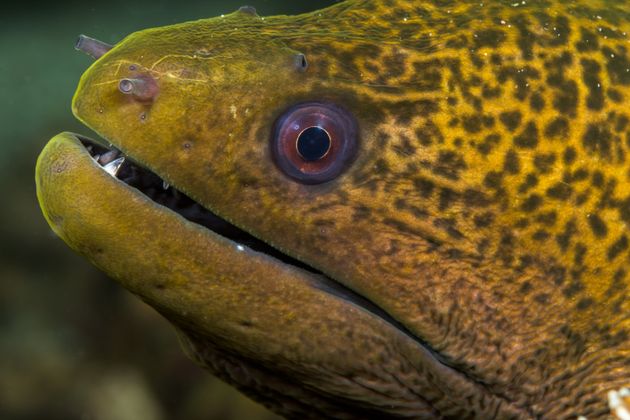
The legend of the Loch Ness Monster is most likely to have been sparked by sightings of giant eels, scientists say.
After combing the loch for samples of environmental DNA, they found that it is unlikely that Nessie is the last surviving prehistoric reptile.
A global team led by Professor Neil Gemmell at the University of Otago in New Zealand, used environmental DNA (eDNA) sampling of the waters to identify tiny genetic remnants left behind by life in the Highland loch and establish a detailed list of all life living in the waters.
During their research, launched last June, 250 water samples were taken from the breadth and depth of Loch Ness.
The DNA from those samples were extracted and sequenced, resulting in around 500 million sequences that have now been analysed against existing databases.
The findings quickly debunked one of the most popular theories: that the Loch Ness Monster could be a reptile, or population of reptiles, which survived from the time of the dinosaurs, such as a plesiosaur.
Other theories suggest that Nessie may be a giant catfish, a giant sturgeon, an eel or even a Greenland shark, which can live for up to 500 years.

The only possibility not ruled out by the research was that of a giant eel – perhaps explaining Nessie’s looped shape in the British imagination.
Professor Gemmell said: “There is a very significant amount of eel DNA. Eels are very plentiful in Loch Ness, with eel DNA found at pretty much every location sampled – there are a lot of them.
“So – are they giant eels? Well, our data doesn’t reveal their size, but the sheer quantity of the material says that we can’t discount the possibility that there may be giant eels in Loch Ness.”
He added: “Divers have claimed that they’ve seen eels that are as thick as their legs in the loch, whether they’re exaggerating or not – I don’t know – but there is a possibility that there are very large eels present in the loch.
“Whether they are as big as around 4m (13ft) as some of these sightings suggest – well, as a geneticist I think about mutations and natural variation a lot, and while an eel that big would be well outside the normal range, it seems not impossible that something could grow to such unusual size.”
He said further research was needed to test the theory, but added: “Based on our data, giant eels remain a plausible idea.”

Another finding from the research was the high levels of DNA from land-based species in the loch, including humans, dogs and farm animals such as sheep and cattle.
DNA from wild animals such as deer, badgers, foxes, rabbits, voles and multiple bird species was also found.
Dr Gemmell said: “These findings indicate (environmental) DNA surveys of major waterways may be useful for rapidly surveying biological diversity at a regional level.”
A documentary about the hunt for Nessie’s DNA is due to air on the Discovery Channel on September 15.
VisitScotland said the Nessie phenomenon is worth millions to the Scottish economy, with hundreds of thousands of visitors travelling to Loch Ness and Drumnadrochit every year to catch a glimpse of the mythical monster.
Unusual items previously found in the loch include a 30ft long Loch Ness monster model discovered on the loch bed in 2016 during a sonar search by Kongsberg Maritime and supported by The Loch Ness Project and VisitScotland.
The model was a prop from the 1970 film The Private Life Of Sherlock Holmes, directed by Billy Wilder and starring Robert Stephens and Christopher Lee.
It is believed the model sank after its buoyant humps were removed.